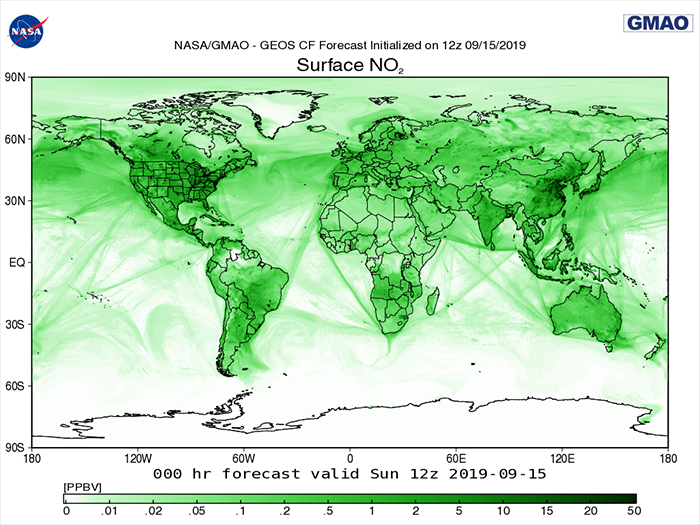GEOS-CF atmospheric composition datasets officially released
09.17.19
GMAO is pleased to release a new GEOS system to the research community, the Composition Forecasts or GEOS-CF. This dataset provides an experimental real-time forecast of the atmospheric composition, using a configuration of the GEOS system that includes the GEOS-Chem high-performance chemistry module. With a global resolution of around 25 km (c360 on the cubed-sphere grid) and a total of 240 gas-phase chemical species and 725 reactions, GEOS-CF presents a formidable computing challenge: it is run using over 3400 cores on the Discover compute system of the NCCS.
This first implementation of GEOS-CF is based on a meteorological replay to the GEOS-FPIT system, with additional constraints on stratospheric ozone from the GEOS-FP which provides more realistic ozone structures in the tropopause region. The forecasts, initialized at 12Z daily, include the full tropospheric-stratospheric chemistry module from GEOS-Chem (version 12.0.1). Surface emissions of pollutants are based on inventories, with weekday/weekend factors imposed for (say) traffic emissions. NASA satellite observations (fire radiative power from MODIS) are used to constrain biomass burning emissions.
GEOS-CF is initially a demonstration project, to apply the capabilities of the GEOS system to a highly topical subject: air pollution. Future versions of the GEOS-CF system will include the assimilation of more NASA observations of atmospheric species, will align the aerosols more closely to the GOCART module and the assimilation performed in GEOS-FP, and will explore different approximations to the full gaseous chemistry models from GEOS-Chem.


